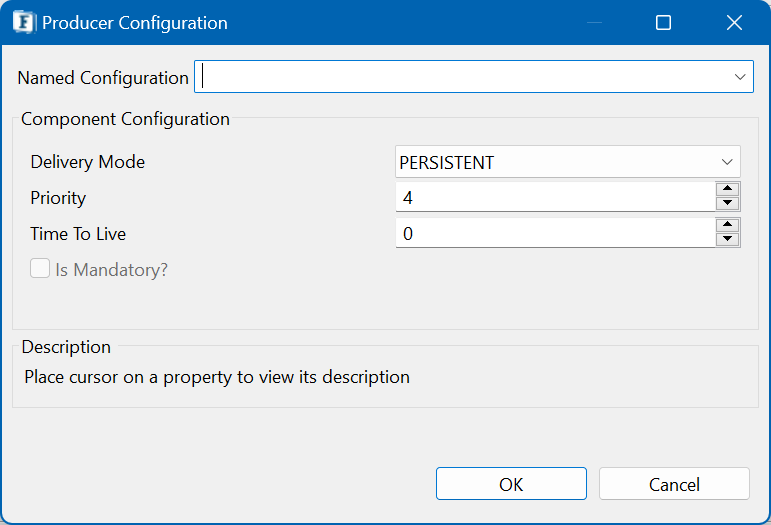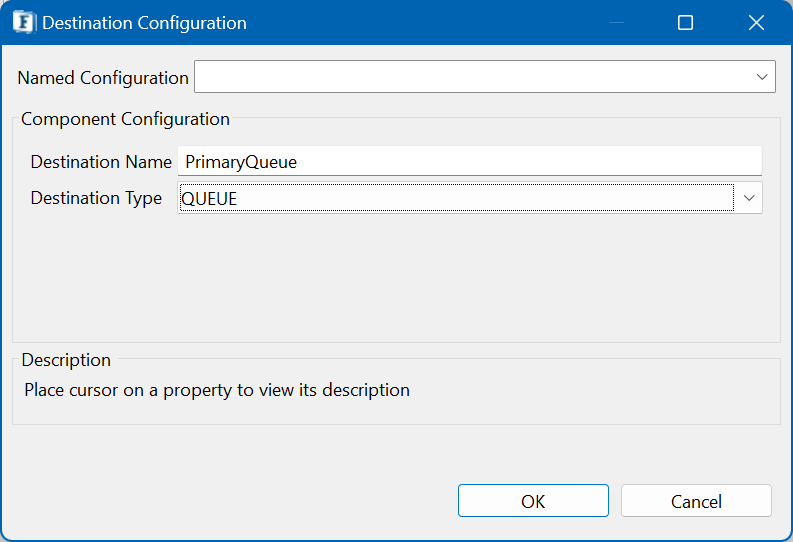AMQP
The AMQP component is designed to facilitate the transfer of messages to an AMQP (Advanced Message Queuing Protocol) broker, such as ActiveMQ, RabbitMQ or Apache Qpid. It allows users to send messages to specified exchanges, queues, or routing keys within the broker.
Configuration and Testing
AMQP Connection Configuration
Connection configuration details can be specified in this panel.
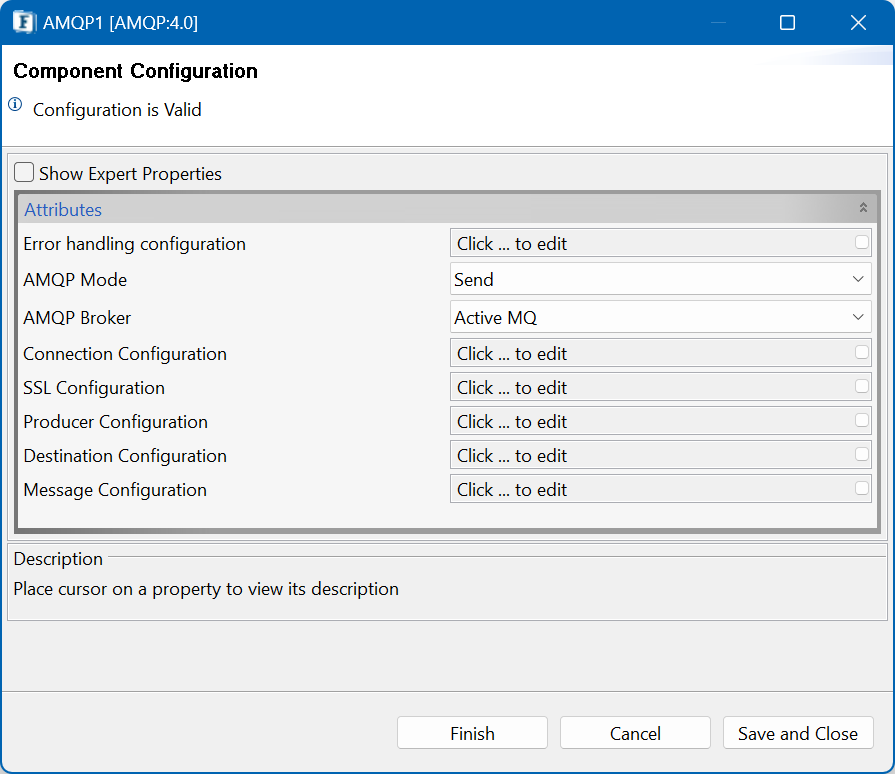
Figure 1: Component Configuration
Error handling configuration
For setting up Error Handling Configurations, please refer to the respective sections in the Common Configurations page.
AMQP Mode
The AMQP component supports both Send and Receive modes, enabling flexible and reliable communication. It can act as a producer to send messages to exchanges or queues and as a consumer to receive and process message
AMQP Broker
Choose the MQ server from the drop-down list provided. The AMQP broker supported are:
- Active MQ
- Rabbit MQ
- Apache Qpid
Connection Configuration
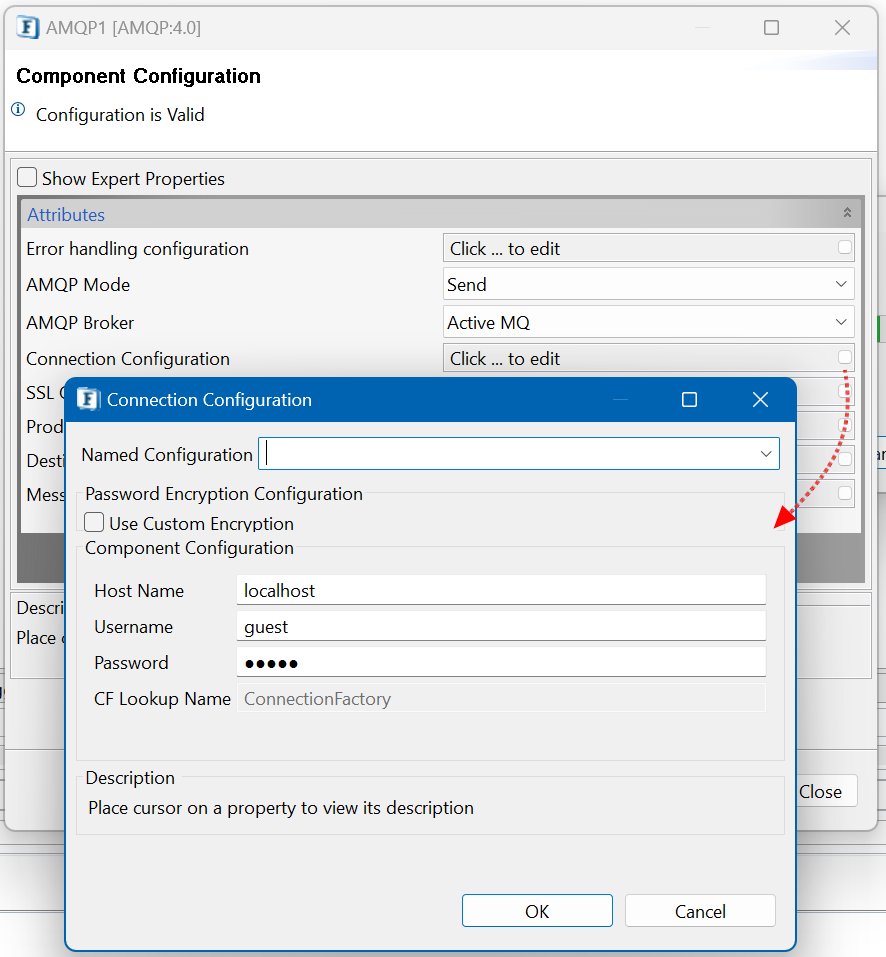
Figure 2: MQTT Connection Configuration
Named Configuration
Please refer Named Configurations section in Common Configurations page for documentation.
Host Name
The hostname or IP address of the AMQP broker.
Username
Username to authenticate and authorize the client who is trying to establish a connection.
Password
Password for the username mentioned. If the username is empty, a password cannot be inserted.
SSL Configuration
Refer to the SSL Configuration section in the JMSIn5.0 for descriptions.
Producer Configuration
An AMQP Producer (Publisher) sends messages to an exchange and then to appropriate queues.
To set the Producer Configuration in the dialog box, click the button on the right side of the property.
Figure 3: Producer Configuration dialog box options
Delivery Mode
- PERSISTENT
Instructs the AMQP broker to take extra care to ensure that a message is not lost in transit in case of a failure. A message sent with this delivery mode is logged to stable storage when it is sent. - NON-PERSISTENT
NON_PERSISTENT delivery mode does not require the AMQP broker to store the message or otherwise guarantee that it is not lost if the provider fails.
Priority
The priority of the message to be sent to the destination.
Time to Live
The time to live (in milliseconds) of the message to be sent to the destination. After the timeout, the message will be discarded.
Destination Configuration
To set the Destination Configuration in the dialog box, click the button on the right side of the property.
Figure 4: Destination Configuration dialog box options
Destination Name
The name of the destination to which the messages have to be sent.
Destination Type
The AMQP type of the destination; either Topic or Queue.
Select one of these destination types:
- Topic: Message can be consumed by several clients. Topic represents Public Subscription (Pub/Sub) domain.
- Queue: Message can be consumed by only one client. Queue represents Point to Point (PTP) domain.
Message Configuration
Click the Message Type Configuration ellipsis button to provide the configuration details.
XML Content
This option has to be chosen if the component needs an XML interface. If this is not selected, the schema will not be set on the input port of the component and the message received on the input port will be sent to the destination as it is to send a plain text message.
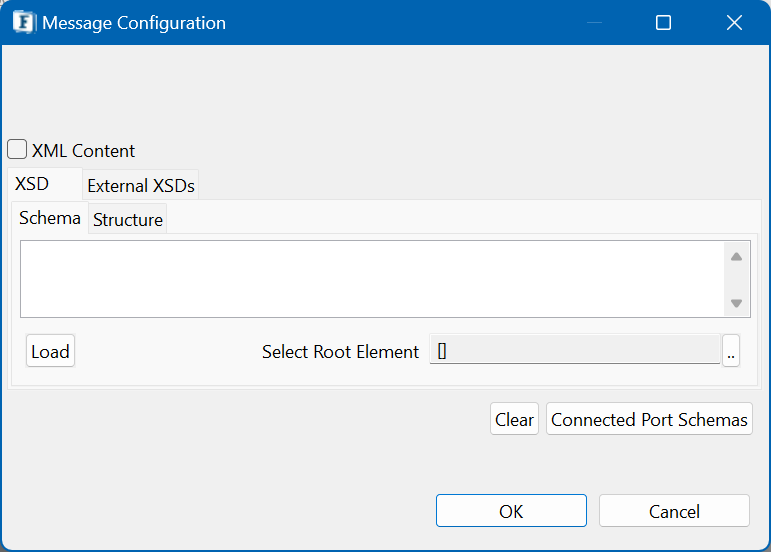
Figure 5: Message Definition Configuration dialog box
Expert Properties
Enable the Expert Properties view to configure these properties.
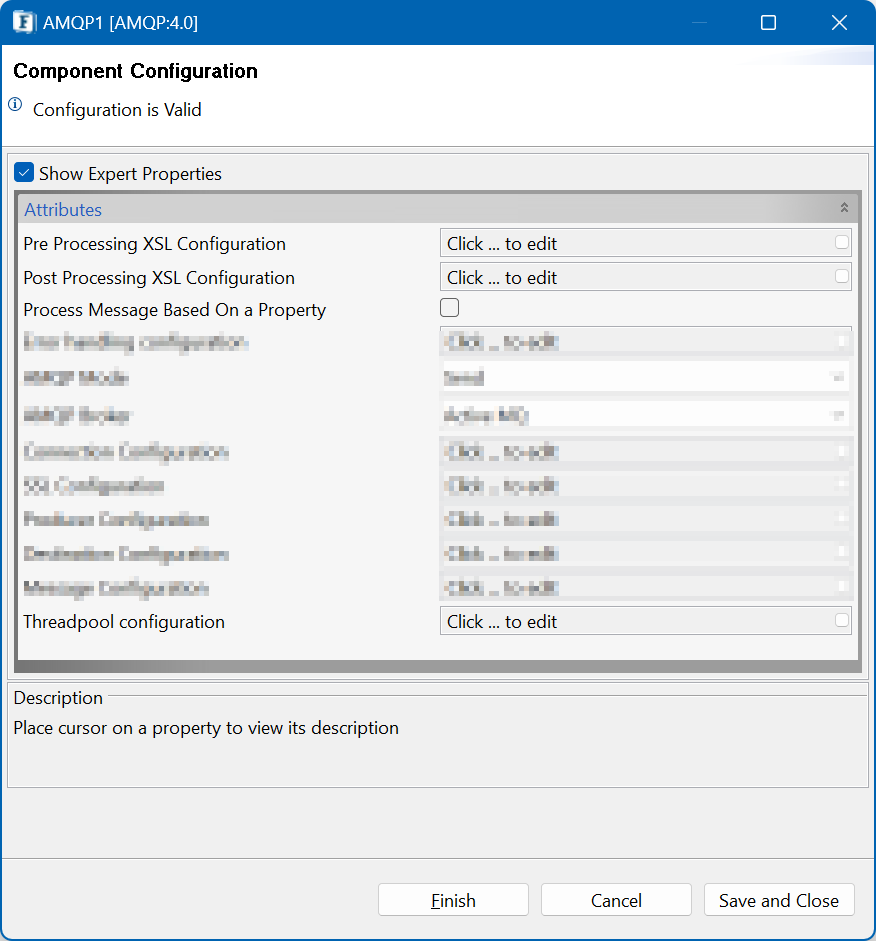
Figure 6: MQTT CPS with the Expert Properties enabled and highlighted
Pre and Post Processing XSL Configuration
Pre Processing XSL Configuration: Pre Processing XSL configuration can be used to transform request message before processing it.
Post Processing XSL Configuration: Post Processing XSL configuration can be used to transform response message before sending it to the output port.
Click the small button against the properties to configure these in the XSL Configuration dialog box.
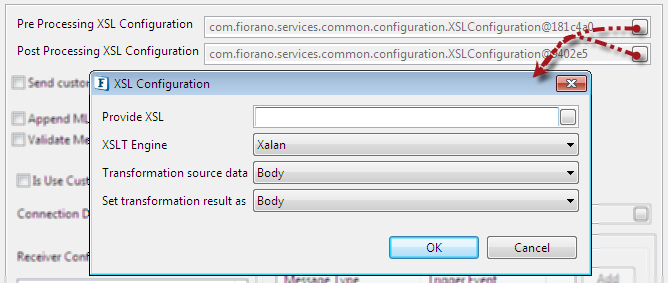
Pre/Post Processing XSL Configuration properties
XSL Configuration
Properties under XSL Configuration are described in the following sections.
Provide XSL
Provide XSL to be applied on the message for transformation.
XSLT Engine
When this property is chosen as 'other' along with Transformer factory class property, it determines the transformer implementation that should be used to perform the transformation.

XSLT Engine properties
Xalan (2.7.0) and Saxon (8.4) transformer implementations are bundled with Fiorano environment for performing transformations.
Xalan
Xalan implementation (org.apache.xalan.processor.TransformerFactoryImpl) is used to perform transformation.Xalan(2.7.0) does not support XSLT 2.0
Saxon
Saxon implementation (net.sf.saxon.TransformerFactoryImpl) is used to perform transformation.Saxon implementation does not support custom functions
- Other
This option should be used when a custom transformer implementation has to be used. Selecting this option shows property Transformer factory class which can be used to provide the transformation factory implementation that should be used.
Transformation Source Data
This property is used to apply transformation source to a particular part of the input message.

Transformation source data properties
- Body: Select if the transformation is to be applied on the Body of the input message.
- Context: Select if the transformation is to be applied on the Application Context of the input message.
Body-Context: Select if the transformation is to be applied on the both Body and Application Context of the input message.
In this case, XML instance of application context is treated as primary source.
Elements in primary source can be referenced directly in XSL, whereas elements of other structure should be referenced as document (StructureName)/ElementName.
Set Transformation result as
This property is used to set transformation result to a particular part of the output message.

Set transformation result as properties
- Body: Select if the transformation result is to be set to the Body of the output message.
- Context: Select if the transformation result is to be set to the Application Context of the output message.
Process Message Based on Property
The property helps components to skip certain messages from processing.

Process Message Based On a Property settings
Enable this property If the component needs to process a message based on a condition which will be validated based on its properties. The conditions can be specified using the properties described below.
Message Property Name
Property name of the message from where the value needs to be fetched to evaluate.
Message Property Value
Value of the message property.
For a given message, the condition is met only if the property specified in "Message Property Name" has the value specified in "Message Property Value". If the incoming message does not satisfy the condition, then the component indiscriminately forwards the message to its output port without processing it.
This property will be useful when sequencing has to be maintained between heterogeneous messages.
Threadpool Configuration
This property is used when there is a need to process messages in parallel within the component, still maintaining the sequence from the external perspective.
- This needs to be used only in such circumstances.
- If sequential processing is not required, please use sessions on the input port.
Click the Threadpool Configuration ellipses button to configure the Threadpool Configuration properties.
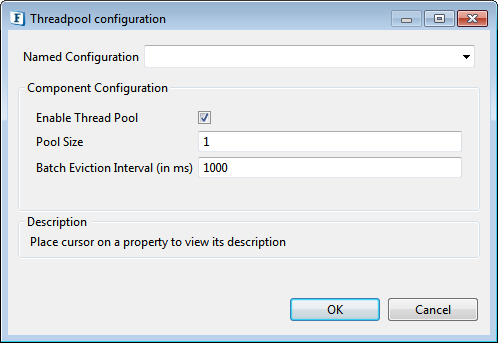
Threadpool Configuration properties
Enable Thread Pool
Enable this option to configure the properties that appear as below.
Pool Size
The number of requests to be processed in parallel within the component. Default value is '1'.
Batch Eviction Interval (in ms)
Time in milliseconds after which the threads are evicted in case of inactivity. New threads are created in place of evicted threads when new requests are received. Default value is '1000'.
Functional Demonstration
Scenario 1
To send a message to the destination "PrimaryQueue".
The component is configured to send a message as described in section Message Definition.
Feeder and display components are connected to the component to send sample input and check the response respectively.

Sample Input
Sending sample input from Feeder.

Figure 7: Sample Input
Output
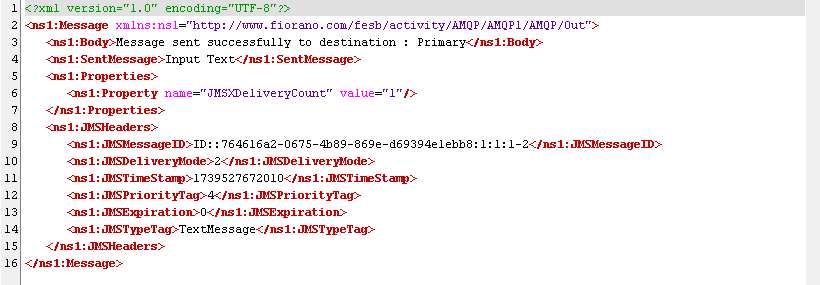
Figure 8: Sample Output
Useful Tips
- Set optimal message age (Time-to-live property) to reduce memory overhead and thereby improve performance.
- Delivery Mode defines whether the message can be persistent or non-persistent. This factor has a negative impact on the performance; choose non-persistent messages where appropriate.
- Enabling Validate Input option has a negative impact on the performance of the component when a complex schema is used. But when this is disabled, it may cause undesired results in case the input XML is not valid.

